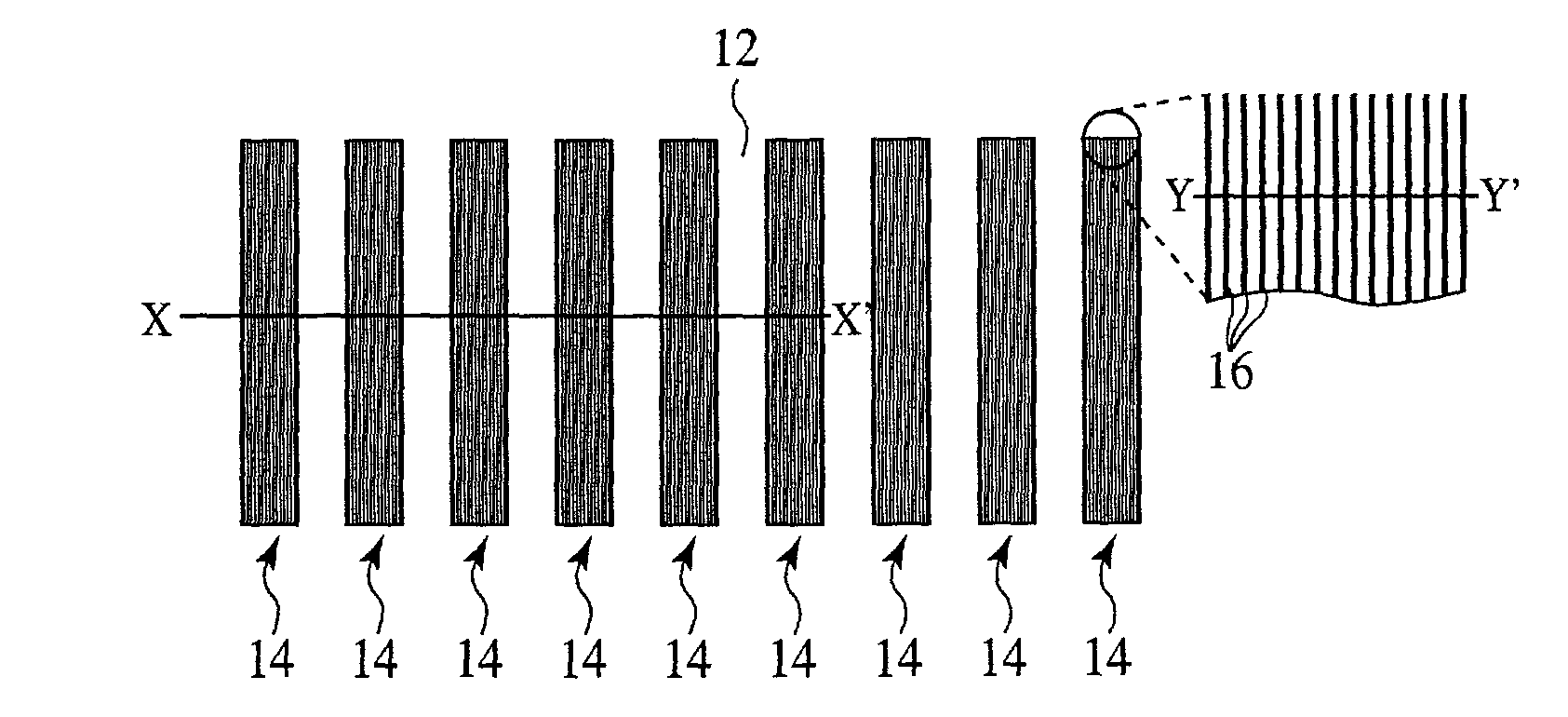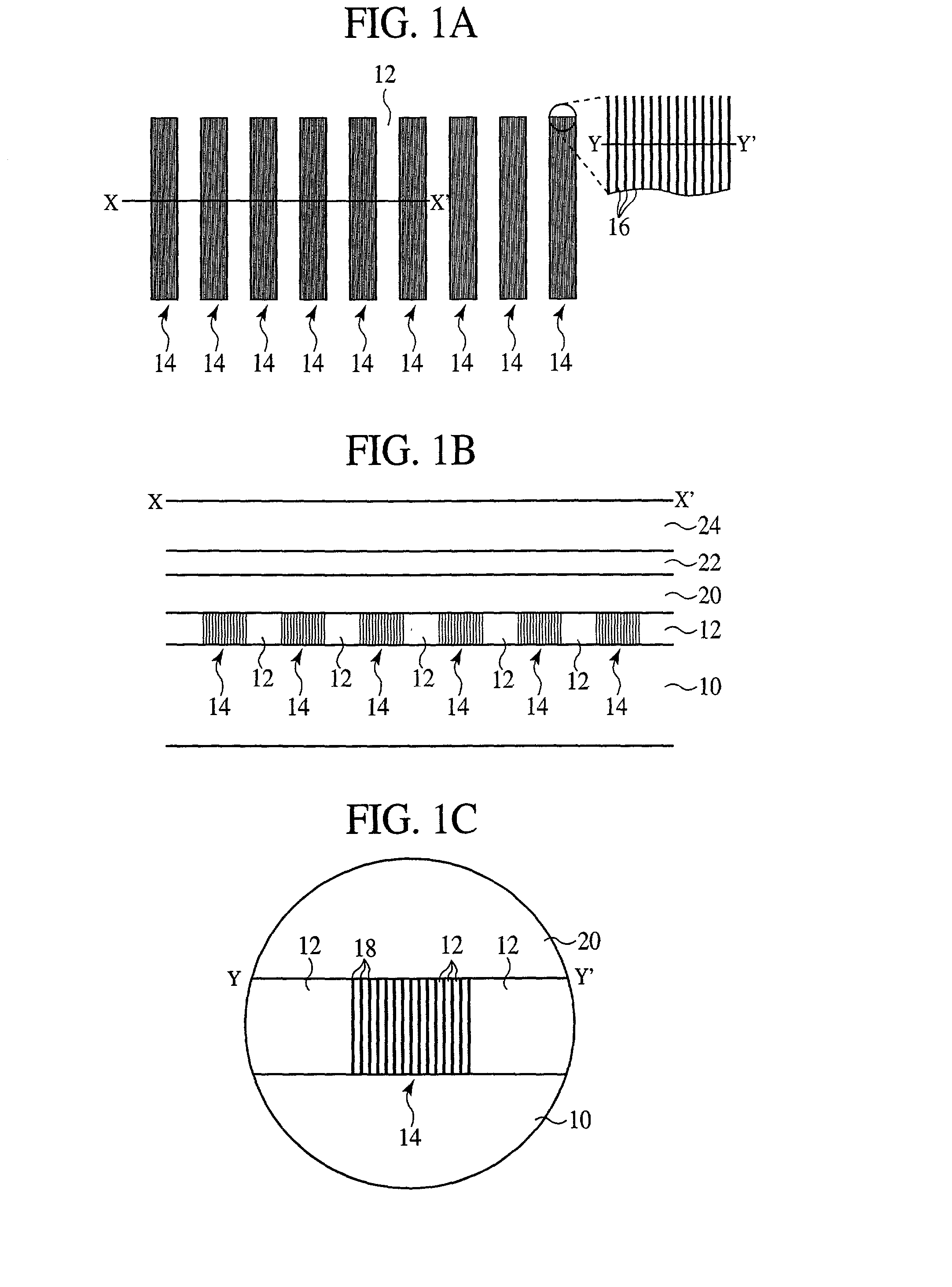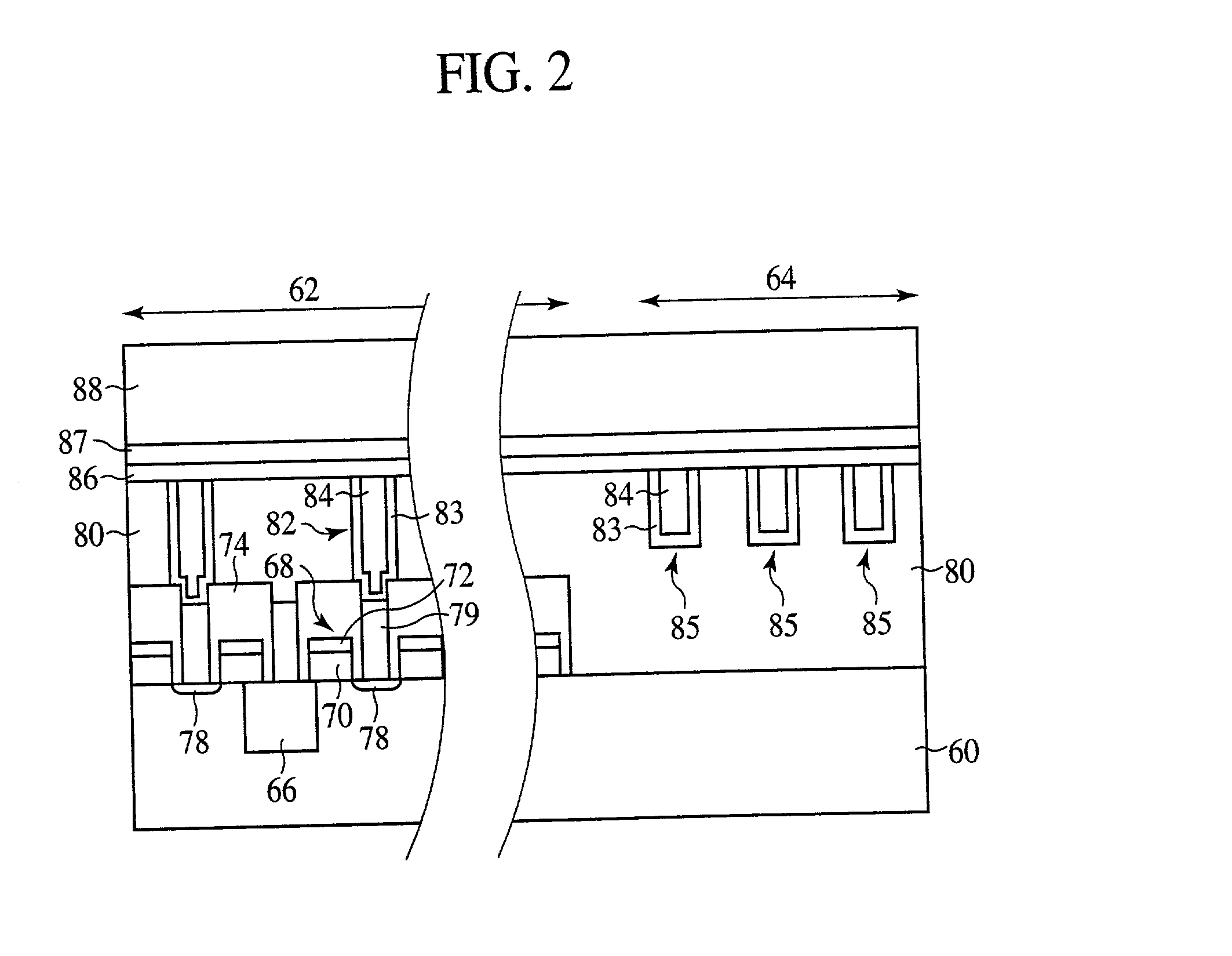Alignment sensing method for semiconductor device
a technology of alignment sensing and semiconductor devices, which is applied in the direction of semiconductor devices, semiconductor/solid-state device details, instruments, etc., can solve the problems of decrease of alignment accuracy of fia, and uneven polishing of regions into hollows, etc., to achieve low deformation, high accuracy, and high contrast
- Summary
- Abstract
- Description
- Claims
- Application Information
AI Technical Summary
Benefits of technology
Problems solved by technology
Method used
Image
Examples
first embodiment
A First Embodiment
[0029]The semiconductor device and an alignment sensing method for the semiconductor device according to a first embodiment will be explained with reference to FIGS. 1A-1C, 2, 3, and 4. FIGS. 1A-1C are diagrammatic views of alignment marks of the semiconductor device according to the first embodiment, which show a structure of the alignment marks. FIG. 2 is a sectional view of the semiconductor device according to the present embodiment, which shows a structure thereof. FIG. 3 is a diagrammatic view of the alignment sensor, which shows a structure thereof. FIG. 4 is a graph of one example of FIA signals of the alignment marks of the semiconductor device according to the present embodiment.
[0030]First, a structure of the alignment marks of the semiconductor device according to the present embodiment will be explained with reference to FIGS. 1A-1C. FIG. 1A is a top view of the alignment marks of the semiconductor device according to the present embodiment. FIG. 1B is...
second embodiment
A Second Embodiment
[0064]The semiconductor device and the alignment sensing method according to a second embodiment of the present invention will be explained with reference to FIGS. 6A-6C and 7. FIGS. 6A-6C are diagrammatic views of alignment marks of the semiconductor device according to the present embodiment, which show a structure thereof. FIG. 7 is a graph of one example of FIA signals of the alignment marks of the semiconductor device according to the present embodiment. The same members of the present embodiment as those of the semiconductor device according to the first embodiment are represented by the same reference numbers not to repeat or to simplify their explanation.
[0065]It can be suppressed by dividing alignment marks to be near a size of a device pattern formed on a wafer that alignment marks are deformed to be unsymmetrical due to dishing or other causes in the conventional CMP step.
[0066]Alignment marks, which are positioned generally on scribe lines at an outer ...
PUM
 Login to View More
Login to View More Abstract
Description
Claims
Application Information
 Login to View More
Login to View More - R&D
- Intellectual Property
- Life Sciences
- Materials
- Tech Scout
- Unparalleled Data Quality
- Higher Quality Content
- 60% Fewer Hallucinations
Browse by: Latest US Patents, China's latest patents, Technical Efficacy Thesaurus, Application Domain, Technology Topic, Popular Technical Reports.
© 2025 PatSnap. All rights reserved.Legal|Privacy policy|Modern Slavery Act Transparency Statement|Sitemap|About US| Contact US: help@patsnap.com



